Silla: The Most Successful Of Three Korean Kingdoms
A. Sutherland - AncientPages.com - Silla was one of the three kingdoms of Korea and the most successful one. In the 7th century, Silla conquered the other kingdoms: Baekje in 660 and Goguryeo in 668.
 Gold Crown from Silla, Korea. source
Gold Crown from Silla, Korea. source
After the conquest, this critical period in the country's history that lasted from 668 to 935 is sometimes called by historians - the United Silla.
Time Before The United Silla Emerged
It was in 57 BC that the first Korean state was formed. From at least the 8th century BC, the Koreans had come under the cultural influence of their powerful neighbor, China. Rice cultivation, bronze tools, and weapons borrowed from the Chinese pushed the Koreans toward urbanization and a state formation. By the 4th century BC, small forms had emerged throughout the Korean peninsula, each based on a walled town. Wars and alliances between the cities led to loose confederations under the dominant cities' rulers. The Chinese considered these confederations a threat, and from 109-106 BC, the Han dynasty was mighty and conquered most of northern and central Korea.
However, there were still some unconquered parts of Korea. Three kingdoms Goguryeo, Baekje (Paeche), and Silla, led by the three most powerful families, began to develop in the first century BC.
Legend Says That A Son Of Heaven Founded Silla
Legend has it that Silla was founded in 57 BC by Pak Hyokkose, the first ruler of this kingdom.
 Rings made of gold and glass, 1.8-2,4 cm. Silla kingdom, early period 5th century found in the south mound of Hwangnam Daechong Tomb, Gyeongju National Museum, Korea.
Rings made of gold and glass, 1.8-2,4 cm. Silla kingdom, early period 5th century found in the south mound of Hwangnam Daechong Tomb, Gyeongju National Museum, Korea.
According to legend, Hyokkose was a Son of Heaven. He hatched from a red egg delivered to Earth by a flying horse. When he was 13 years old, six main clans of the Chin Han Confederation put him on the throne.
The people prayed for an equally remarkable wife for Hyokkose, and a beautiful baby girl was delivered from under the rib of the hen dragon.
The people were amazed that the girl had a beak like a bird, but this fell off when she had her first bath. After reigning for sixty-one years, Hyokkose ascended to heaven, and after seven days, his bodily remains fell to Earth.
They are buried in a tumulus on the grounds of a legendary monastery. The reigns of most of Silla's early kings are similarly shrouded in legend.
The Silla's Central City Of Gyeongju And Maripgans' Reigns
Silla established itself as an ancient state in the mid-4th century through its rulers, which were titled Maripgan and had their central city - Gyeongju.
 Gold earrings of silver. Dimensions L. 8.5cm, D. 3.2cm, Silla Kingdom. source
Gold earrings of silver. Dimensions L. 8.5cm, D. 3.2cm, Silla Kingdom. source
The first historical king was Naemul of Silla, who reigned from 356 to 402 AD, established a hereditary monarchy, and took the royal title of Maripgan. The Maripgan reigns, called the Maripgan period, was from 356 to 514. According to sources, not all could use the Maripgan title only used as the unification of the city-states under one sovereign ruler was completed in the mid-fourth century.
The Maripgan also served as the primary commander within the Silla's territory and that of nearby states. However, Maripgan's power was not unlimited. There were still the lords of smaller states with much influence and the Silla Kingdom's nobles who still had much to say.
Conflict With Neighboring Rivals
Until the 2nd century, Silla existed as a separate confederation in southeastern Korea, and only King Naemul (356-402) established it as a hereditary monarchy.
King Jinheung (540-576), one of the most powerful kings of Silla, was responsible for expanding Silla's territory vastly. Silla began to grow but remained in long-lasting conflict with its two neighboring rivals, Baekje (Paekche) and Goguryeo (Koguryo) kingdoms. In 660, Silla conquered Baekje, and the domain successfully captured Goguryeo in 668.
The 7th-century alliance with the Tang Dynasty of China contributed much that Silla eventually conquered the Korean peninsula in 668 CE. Finally, it was possible to establish the Unified Silla Kingdom that ruled for the next three centuries.
Spreading Of Buddhism And Exports Of Goods From Silla
Buddhism was supported by the state and spread rapidly in Silla.
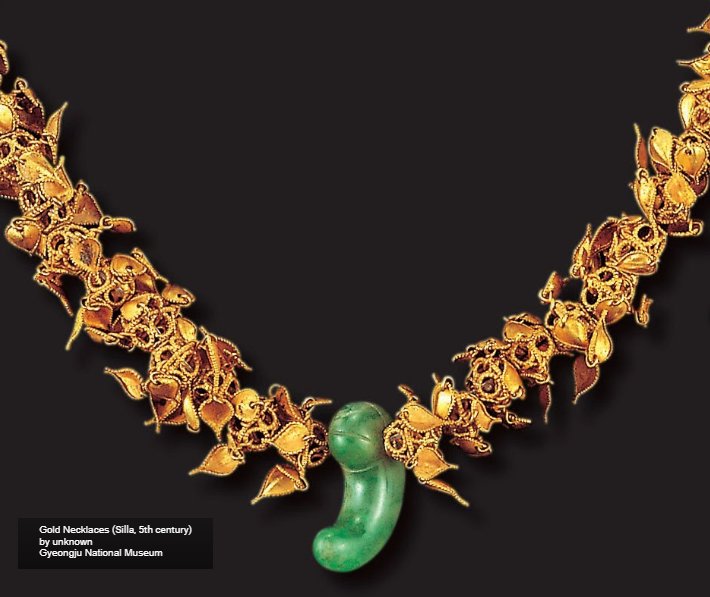 Gold necklaces found in large mounds are believed to have belonged to members of the royal family. source
Gold necklaces found in large mounds are believed to have belonged to members of the royal family. source
Many temples were built, and wooden pagodas were replaced with stone structures. Also, the army of the kingdom developed significantly.
The United Silla's exports included paper, silver, ceramics, rice, silk, bronze, spoons, Buddhist scriptures, cosmetics, medicine, fabric dying materials, musical instruments, measuring tools, bowls, scissors, carpets, candlesticks, candles, pine nuts, honey, and ginseng.
Clothing And Food Of Silla Kings And Queens
We know much about the life of the Silla royals from excavations that delivered various priceless findings. The Maripgan kings and queens lived in a royal palace of a large size. This complex structure had offices, storerooms, bedrooms, stables, and numerous servants.
The royal clothes included the most delicate silk dresses "with gold decorations and a crown and belt made of pure gold.
The Maripgan kings and queens wore earrings on their pierced ears, rings on every finger, and several gold bracelets. In addition to necklaces of gold, the kings and queens wore beads, gold bars, and jade ones. They had swords decorated with gold and ceremonial armor, some made of silver. The royal meals included fish, turtle, chicken, duck, pheasant, cow, horse, and sea lion. Food in bronze vessels was scooped out with a silver spoon to be served on gold and silver dishes.
Drinks were served in exotic glass bottles and cups imported from the West via the Silk Road. Various items, such as jars containing grains and cooking ingredients, bundles of metal currency tied in tens, multiple weapons, and pottery, were kept in large storerooms. The horses were managed in a stable with horse trappings made especially for various ceremonies.
Upon a Maripgan king's death, he was buried with all the above luxury items and five living servants in a tomb that approximated the royal palace to assure continued prosperity in the afterlife.
Gold Tradition In Silla – When Did It Start?
The crowns of Silla's rulers, often in the shape of deer antlers or trees reaching toward heaven, reflected shaman beliefs. Silla's elaborate gold crowns and jewelry were the most impressive among them.
The gold and silver ornaments tradition most likely originated with the nomadic tribes of North Asia neighboring Siberia. Gold could spread to Silla from the Goguryeo (Koguryo) people, who were the first to acquire gold from the inhabitants of eastern Eurasian steppes in Mongolia, Inner Mongolia, and Northeastern China). Goguryeo was known to have produced and used gold ornaments from about the first century.
Silla's and Goguryeo's (Koguryo) artifacts, like belt buckles, earrings, caps, shoes, long pendants, pieces of jade, and plaques made from precious metal, are similar. Therefore, researchers believe that Goguryeo introduced adornments into the southern Korean land as early as 300 CE.
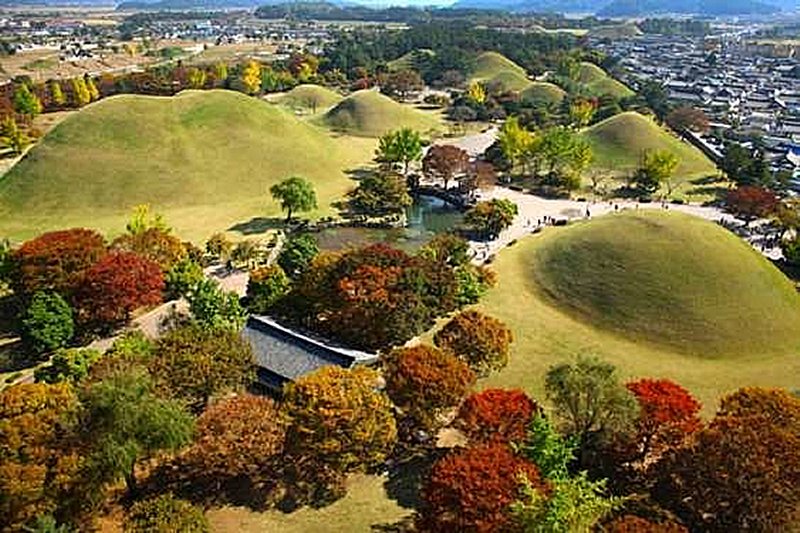 Aerial view of Daereungwon Tomb Complex (4-6th century AD) in Gyeongju, the former capital of Korea, now tourist open-air museum city. © Korea Tourism Organization. source
Aerial view of Daereungwon Tomb Complex (4-6th century AD) in Gyeongju, the former capital of Korea, now tourist open-air museum city. © Korea Tourism Organization. source
Huge Burial Mounds And Rich Royal Tombs
Today, Gyeongju city of the Maripgan-ruled Silla is Korea's valuable cultural treasure, known for its Tumulus Park (Daereungwon), which contains several massive royal burial mounds that functioned as tombs of the kings, queens, and aristocrats.
Many tombs and remnants of the kingdom period can be found in and around Gyeongju.
There are as many as 23 tombs in the park, but only one - 'Heavenly Horse Tomb - named after a painting depicting a galloping horse and dated to the 5th century - is open to the public.
The Maripgan rulers and their clans showed off their status by wearing a gold crown and numerous ornaments of fabulous gold, silver, and gilt bronze. However, gold was a symbol of supreme power, and the gold crowns - uncovered in the tumuli of Gyeongju - are considered the emblem of Silla culture.
Some of the crowns were made of pure gold and reserved for kings. Princes or lesser kings probably used other ones made from gilt-bronze or gold-plated bronze.
One of Silla's Golden Age's legacies is the Cheomseongdae ("star-gazing tower") observatory that became a symbol of early astronomy. It is located in Gyeongju, South Korea, and is the oldest astronomical observatory in East Asia.
Southern Observatory of the European Astronomers located in Chile is named – Silla.
Written by – A. Sutherland - AncientPages.com Senior Staff Writer
Updated on Aug 19, 2023
Copyright © AncientPages.com All rights reserved. This material may not be published, broadcast, rewritten or redistributed in whole or part without the express written permission of AncientPages.com
Expand for referencesMore From Ancient Pages
-
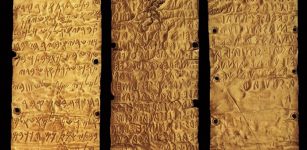 Pyrgi Gold Tablets: A Rare Ancient Bilingual Treasure
Artifacts | Nov 23, 2018
Pyrgi Gold Tablets: A Rare Ancient Bilingual Treasure
Artifacts | Nov 23, 2018 -
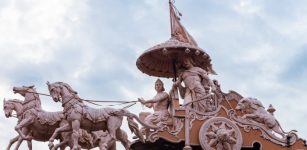 Mahabharata And Ramayana – Two Major Sanskrit Epics Of Ancient India
Featured Stories | Jul 12, 2021
Mahabharata And Ramayana – Two Major Sanskrit Epics Of Ancient India
Featured Stories | Jul 12, 2021 -
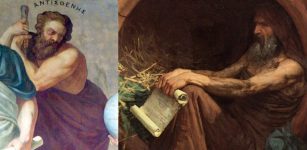 Antisthenes And Diogenes – Founders Of Cynicism Were Ancient Greek Philosophers
Ancient History Facts | Jan 7, 2018
Antisthenes And Diogenes – Founders Of Cynicism Were Ancient Greek Philosophers
Ancient History Facts | Jan 7, 2018 -
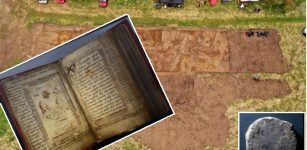 Archaeologists Discover Long-Lost Scottish Monastery Of Deer And Solve An Old Manuscript Mystery
Archaeology | Nov 21, 2023
Archaeologists Discover Long-Lost Scottish Monastery Of Deer And Solve An Old Manuscript Mystery
Archaeology | Nov 21, 2023 -
 Ancient Mysteries And Curious Legends Of Chimney Rock And Grandfather Mountain In North Carolina
Featured Stories | Feb 5, 2024
Ancient Mysteries And Curious Legends Of Chimney Rock And Grandfather Mountain In North Carolina
Featured Stories | Feb 5, 2024 -
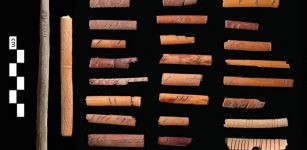 America’s First Casino Was Created By The Promontory Culture 700 Years Ago
Ancient History Facts | Apr 30, 2016
America’s First Casino Was Created By The Promontory Culture 700 Years Ago
Ancient History Facts | Apr 30, 2016 -
 Ancient DNA Reveals “Completely Unexpected” Marriage Rules In Minoan Crete
Archaeology | Jan 16, 2023
Ancient DNA Reveals “Completely Unexpected” Marriage Rules In Minoan Crete
Archaeology | Jan 16, 2023 -
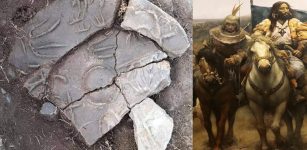 Lost Ancient Dragon City Of The Xiongnu Empire Discovered In Mongolia
Archaeology | Jul 22, 2020
Lost Ancient Dragon City Of The Xiongnu Empire Discovered In Mongolia
Archaeology | Jul 22, 2020 -
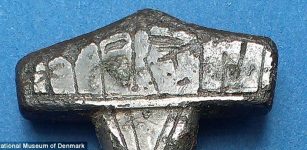 Remarkable Discovery Of Unusual “Hammer Of Thor” Finally Solves An Ancient Mystery
Archaeology | Jul 2, 2014
Remarkable Discovery Of Unusual “Hammer Of Thor” Finally Solves An Ancient Mystery
Archaeology | Jul 2, 2014 -
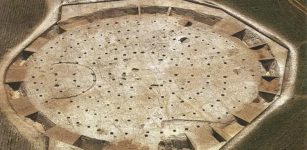 Why Was Dorset Ancient Mega Henge Built In Such A Hurry?
Archaeology | Nov 5, 2020
Why Was Dorset Ancient Mega Henge Built In Such A Hurry?
Archaeology | Nov 5, 2020 -
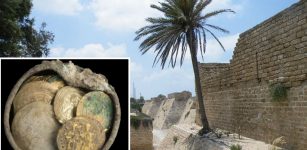 Rare Gold Coins And Treasures Linked To Crusaders’ Conquest Of Caesarea – Discovered
Archaeology | Dec 4, 2018
Rare Gold Coins And Treasures Linked To Crusaders’ Conquest Of Caesarea – Discovered
Archaeology | Dec 4, 2018 -
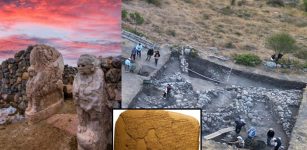 Cuneiform Tablet With New Indo-European Language Discovered In The Capital Of The Hittites
Archaeology | Sep 21, 2023
Cuneiform Tablet With New Indo-European Language Discovered In The Capital Of The Hittites
Archaeology | Sep 21, 2023 -
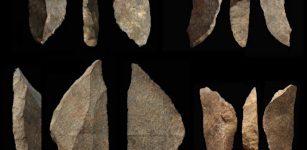 Prehistoric Swiss Army Knife Shows How Early humans Communicated
Archaeology | Jun 9, 2022
Prehistoric Swiss Army Knife Shows How Early humans Communicated
Archaeology | Jun 9, 2022 -
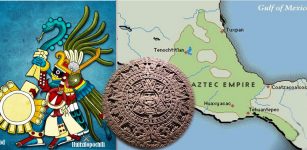 Why The Aztecs Called Themselves ‘Mexica’
Ancient History Facts | Jan 13, 2018
Why The Aztecs Called Themselves ‘Mexica’
Ancient History Facts | Jan 13, 2018 -
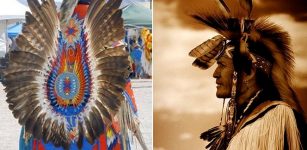 What Was The Symbolism Behind Native American Feathers?
Ancient History Facts | Apr 21, 2017
What Was The Symbolism Behind Native American Feathers?
Ancient History Facts | Apr 21, 2017 -
 Codex Gigas – The Devil’s Bible – Ancient Secrets Of The World’s Largest Book
Artifacts | Jun 15, 2014
Codex Gigas – The Devil’s Bible – Ancient Secrets Of The World’s Largest Book
Artifacts | Jun 15, 2014 -
 Cog Stones – Unusual Stone Discs Made By An Ancient Lost Civilization In California
Artifacts | Jan 4, 2018
Cog Stones – Unusual Stone Discs Made By An Ancient Lost Civilization In California
Artifacts | Jan 4, 2018 -
 New Evidence Of Human Habitation At Panga ya Saidi Cave, Kenya That Dates Back 78,000 Years
Archaeology | May 11, 2018
New Evidence Of Human Habitation At Panga ya Saidi Cave, Kenya That Dates Back 78,000 Years
Archaeology | May 11, 2018 -
 On This Day In History: The Name Of America Used For The First Time On World Map – On Apr 25, 1507
News | Apr 25, 2016
On This Day In History: The Name Of America Used For The First Time On World Map – On Apr 25, 1507
News | Apr 25, 2016 -
 Bizarre And Rare Finds In Viking Houses – What Was Behind This Mysterious Practice?
Vikings | Nov 17, 2024
Bizarre And Rare Finds In Viking Houses – What Was Behind This Mysterious Practice?
Vikings | Nov 17, 2024
